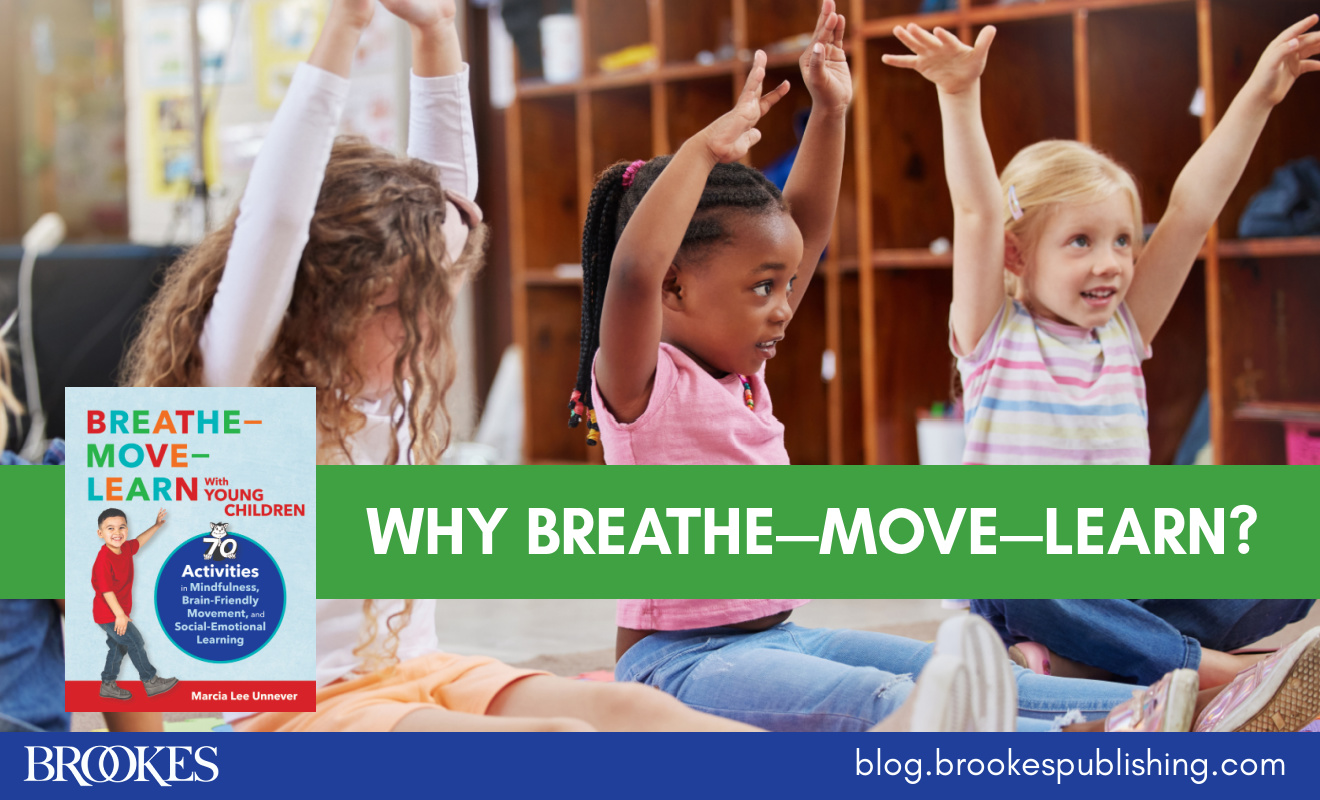10 Ways Early Childhood Professionals Can Reduce Stress and Burnout This Year
July 16, 2024
 Working with young children and families is a challenging job—whether you’re an educator, an early interventionist, or a care provider. Busy schedules, paperwork, classroom management issues, conflict with colleagues, worries about at-risk families: so many factors can contribute to your daily stress.
Working with young children and families is a challenging job—whether you’re an educator, an early interventionist, or a care provider. Busy schedules, paperwork, classroom management issues, conflict with colleagues, worries about at-risk families: so many factors can contribute to your daily stress.
Excerpted and adapted from Brookes books, the tips in this post will help you reduce stress, avoid burnout, achieve a better work-life balance, and stay optimistic in the year ahead.
Practice reflection.
Reflection is instrumental in creating and sustaining well-being. Maintaining a curious stance about your own feelings, behaviors, responses, and actions allows for deeper understanding of the past and lays the foundation for growth in the future. Take the time and space to reflect individually or in a small group about how you’re feeling and interacting on the job. Examples of reflective questions to ask are:
- How did my feelings in that moment affect my response to that child or adult?
- What do my reactions to everyday behaviors look like?
- How can I calm myself when I am feeling a big emotion?
- What strategies do I use to stay calm in a stressful moment?
Schedule your deep breathing.
The many benefits of deep breathing include stabilized blood pressure, increased energy, improved digestion, decreased depression and anxiety, improved focus, and improved sleep.
Use your daily schedule to find a few times across the day to practice your own deep breathing. In a classroom, for example, the times established might be child arrival, when returning to the classroom after playing outside, and nap time. Using a visual prompt on the daily schedule can help remind you to breathe throughout the day. You can also make deep breathing an activity to try with children throughout the day.
Do this work-life balance exercise.
Here’s a good way to examine your current work and life activities and consider whether you’re striking a good balance. Download this exercise from the new edition of Tackling the Tough Stuff to reflect on aspects of your work/personal-life balance and pinpoint areas that might need adjusting.
Breathe-Move-Learn with children.
Support mindfulness, social-emotional development, and readiness for learning with Breathe–Move–Learn With Young Children. Marcia Lee Unnever’s unique new collection of 70 quick activities will help kids wake up, calm down, focus, and soothe anxious feelings in as little as 15 minutes a day—and the activities will be a pick-me-up for you, too! Read this blog post for 5 Great Reasons to “Breathe–Move–Learn” With Young Children.
Try a visualization exercise.
In a private place, such as your bedroom at night, fling away tensions symbolically and visualize them being sent far away. Imagine that the stress is traveling from your toes gradually all the way up through your body and through your arms. Then fling out the stress by shaking each arm in turn outward to get rid of the anxious feelings. Visualize the tense feelings soaring away in opposite directions and traveling far from you.
 Experience flashes of beauty.
Experience flashes of beauty.
Focus for a little while every day on the awesome loveliness of the world around you. For example, take the time to get totally absorbed in a beautiful sunset, watch monarch butterflies on their great migration, or look at amazing artworks in a book, at a museum, or online. Even a few seconds of focus on beauty during the day can expand your sense of well-being!
Set boundaries and leave work at work.
When work is leaking into or negatively affecting your personal life, it’s time to check your boundaries. That’s not easy—it takes intention, attention, and action. Add physical cues to your day to help you recognize your boundaries. Develop a transition routine between home and work, such as listening to a radio show or audiobook that you only treat yourself to during this time. Close your eyes and imagine your work day running off of you like river water over a boulder. If you find yourself talking a lot about work at home, press pause and do some self-examination.

Process your work experiences with colleagues.
Sometimes, the best medicine for work stress is to talk with someone who understands. Share how you feel and process your experiences with a trusted colleague or supervisor. Vent if you need to, but do so respectfully. Support others who are stressed, which can make you feel better too. Just remember to avoid sharing your personal stressors with the families you work with—they deserve your best face forward.
Ask for help when you need it.
There is no weakness in asking for help. If you’re feeling stressed, schedule time to talk with your supervisor. Before that meeting, consider how you’re feeling and what words best reflect your experience, and try to come up with an idea or two for improving your situation. Your supervisor may be more likely to work with you when you present possible solutions to a problem. Maybe taking some time off would help. Ask for the help you need and access the support network you have. If you find you need more help than your network can provide, ask for more formalized help. Seeking out counseling can be one of the best things you can do for yourself.
Take a vacation.
A day off? A whole week off? Yes! Take a vacation or even a staycation. You may love your work, but time away can be just what you need to balance your life and refresh yourself. Pick the week far in advance so you can plan for how you will make up and manage your responsibilities. Prepare for your vacation so you can leave work behind and focus on relaxation, fun, connection with your family, or whatever you look forward to during that time. Just remember, when you take time off, that means time off—no work-related emails, phone calls, or squeezing in a meeting here or there. Time. Off.
Use these tips this year to take good care of yourself, make time for the things you love, and manage the stress associated with your job. Explore the books behind today’s post for more self-care tips, plus practical guidance from the experts on improving outcomes for young children and their families.
EXPLORE THE BOOKS
Tips 1 and 2 adapted from Unpacking the Infant–Toddler Pyramid Model, by Amy Hunter, Mary Louise Hemmeter, Kathryn M. Bigelow, and Neal M. Horen
Tip 3 from Tackling the Tough Stuff, Second Edition, by Angela M. Tomlin & Stephan A. Viehweg
Tip 4 from Breathe–Move–Learn With Young Children, by Marcia Lee Unnever
Tips 5 and 6 adapted from Little Kids, Big Worries, by Alice Sterling Honig
Tips 7-10 adapted from Pause and Reflect, by Dana C. Childress







Write a Comment
Your email address will not be published. Required fields are marked *
Post a Comment